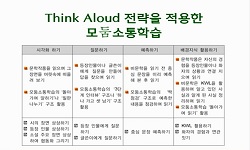Some negative attitudes toward poetic metaphors are based on the ideas that they are not used frequently in everyday life and that they are rhetorical figures only for style's sake. But the idea turns out to be merely a misconception. In fact, poetic ...
http://chineseinput.net/에서 pinyin(병음)방식으로 중국어를 변환할 수 있습니다.
변환된 중국어를 복사하여 사용하시면 됩니다.
- 中文 을 입력하시려면 zhongwen을 입력하시고 space를누르시면됩니다.
- 北京 을 입력하시려면 beijing을 입력하시고 space를 누르시면 됩니다.
https://www.riss.kr/link?id=A77004644
- 저자
- 발행기관
- 학술지명
- 권호사항
-
발행연도
2009
-
작성언어
-
- 주제어
-
KDC
840
-
등재정보
KCI등재
-
자료형태
학술저널
- 발행기관 URL
-
수록면
129-170(42쪽)
-
KCI 피인용횟수
0
- 제공처
-
0
상세조회 -
0
다운로드
부가정보
다국어 초록 (Multilingual Abstract)
Some negative attitudes toward poetic metaphors are based on the ideas that they are not used frequently in everyday life and that they are rhetorical figures only for style's sake. But the idea turns out to be merely a misconception. In fact, poetic metaphors are grounded on the basic conceptual metaphors that are used in our daily life. The great poets themselves basically use the same way of thinking with us. Thus, to understand the nature and essence of poetic metaphors is to understand our daily way of thinking, and by using the daily conceptual metaphorical patterns, we can have easier access to the appreciation of English poetry.
This paper proposes that students can understand English and American poetry better by learning the conceptual metaphors. In order to prove the validity of the theory, the paper provides a teaching and learning model and develops materials for metaphor instruction that teachers can use practically in poetry class. And based on the teaching model and materials developed, the study applies them to an example of Emily Dickinson's poem, "Because I could not stop for Death." The poetic metaphors used in Dickinson's poem are analyzed in detail according to the basic conceptual metaphorical patterns and a variety of activities are used for this analysis in Dickinson's poem. the teaching model and materials are targeted for college students who take the course of the "Introduction to English Poetry" as an English major class. The experiment, assigned for the teaching of the element of metaphor, is scheduled to be done for six hours in two weeks. For the experiment, worksheets and activity sheets are developed and analyzed for the results of the experiment.
The teaching model and materials for metaphor instruction provided by this study give students a great help with the understanding of rhetorical figures that hinder the proper appreciation of English poetry. The teaching model and materials also contribute to the improvement of students' general English competence by introducing everyday metaphors to the English classroom. Teaching metaphors must be an essential part of English language education as well as English poetry class.
참고문헌 (Reference)
1 김영실, "일상어로서의 영어 은유에 대한 EFL 학습자의 인식: 개념적 은유 이론에 기초한 질적 분석" 한국응용언어학회 22 (22): 165-187, 2006
2 이기호, "은유 표현 지도 방안 연구" 한국교원대학교 2003
3 이도수, "문화자료를 활용한 영어교육" 도서출판 인터비전 2005
4 임지룡, "개념적 은유에 대하여" 한국어의미학회 20 : 29-60, 2006
5 Hirsch, Jr., "What Your Fifth Grader Needs to Know" A Delta Book 69-74, 1993
6 Goatly, Andrew, "The Language of Metaphors" Routledge 1997
7 Lee-Smith, Angela, "Teaching Metaphors to Enhance KFL Competence" 15 (15): 319-339, 2004
8 Hoffman, R. R., "Recent Research on Metaphor" 3 : 35-62, 1983
9 Lakoff, George, "More Than Cool Reason: A Field Guide to Poetic Metaphor" U of Chicago P 1989
10 Lakoff, George, "Metaphors We Live By" U of Chicago P 1980
1 김영실, "일상어로서의 영어 은유에 대한 EFL 학습자의 인식: 개념적 은유 이론에 기초한 질적 분석" 한국응용언어학회 22 (22): 165-187, 2006
2 이기호, "은유 표현 지도 방안 연구" 한국교원대학교 2003
3 이도수, "문화자료를 활용한 영어교육" 도서출판 인터비전 2005
4 임지룡, "개념적 은유에 대하여" 한국어의미학회 20 : 29-60, 2006
5 Hirsch, Jr., "What Your Fifth Grader Needs to Know" A Delta Book 69-74, 1993
6 Goatly, Andrew, "The Language of Metaphors" Routledge 1997
7 Lee-Smith, Angela, "Teaching Metaphors to Enhance KFL Competence" 15 (15): 319-339, 2004
8 Hoffman, R. R., "Recent Research on Metaphor" 3 : 35-62, 1983
9 Lakoff, George, "More Than Cool Reason: A Field Guide to Poetic Metaphor" U of Chicago P 1989
10 Lakoff, George, "Metaphors We Live By" U of Chicago P 1980
11 Kovecses, Z., "Metaphor: Practical Introduction" Oxford UP 2002
12 Johnson, Christopher, "Metaphor vs. Conflation in the Acquisition of Polysemy: The Case of SEE.” Cultural, Typological and Psychological Issues in Cognitive Linguistics" John Benjamins 155-169, 1999
13 Ortony, Andrew, "Metaphor and Thought" Cambridge UP 1996
14 Kovecses, Z., "Idioms: A View from Cognitive Semantics" 17 : 326-353, 1996
15 Russo, John Paul, "I. A. Richards: His Life and Work" Routledge 1989
16 Grady, Joseph, "Foundations of Meaning: Primary Metaphors and Primary Scenes" U of California 1997
17 Narayanan, S., "Embodiment in Language Understanding: Sensory-Motor Representations for Metaphoric Reasoning about Event Descriptions" U of California 1997
18 Abrams, M. H., "A Glossary of Literary Terms. 7th ed" Harcourt Brace College Publishers 1999
동일학술지(권/호) 다른 논문
-
『오셀로』, <저녁 식사하러 누가 왔나 보세요>, <정글 피버>에 나타난 인종 차별적 이분법과 백인 남성의 집단 불안심리
- 한국영미문학교육학회
- 김미경(Mi-Kyong Kim)
- 2009
- KCI등재
-
- 한국영미문학교육학회
- 조광순(Kwang Soon Cho)
- 2009
- KCI등재
-
내용-언어 통합 교수학습 (CLIL) 모델 기반 영미문학 교육
- 한국영미문학교육학회
- 어도선(Do Seon Eur)
- 2009
- KCI등재
-
- 한국영미문학교육학회
- 공명수(Myung-su Kong)
- 2009
- KCI등재
분석정보
인용정보 인용지수 설명보기
학술지 이력
| 연월일 | 이력구분 | 이력상세 | 등재구분 |
|---|---|---|---|
| 2026 | 평가예정 | 재인증평가 신청대상 (재인증) | |
| 2020-01-01 | 평가 | 등재학술지 유지 (재인증) |  |
| 2017-01-01 | 평가 | 등재학술지 유지 (계속평가) |  |
| 2013-01-01 | 평가 | 등재 1차 FAIL (등재유지) |  |
| 2010-01-01 | 평가 | 등재학술지 유지 (등재유지) |  |
| 2008-01-01 | 평가 | 등재학술지 유지 (등재유지) |  |
| 2005-01-01 | 평가 | 등재학술지 선정 (등재후보2차) |  |
| 2004-01-01 | 평가 | 등재후보 1차 PASS (등재후보1차) |  |
| 2003-01-01 | 평가 | 등재후보학술지 선정 (신규평가) |  |
학술지 인용정보
| 기준연도 | WOS-KCI 통합IF(2년) | KCIF(2년) | KCIF(3년) |
|---|---|---|---|
| 2016 | 0.29 | 0.29 | 0.23 |
| KCIF(4년) | KCIF(5년) | 중심성지수(3년) | 즉시성지수 |
| 0.22 | 0.23 | 0.599 | 0.08 |





 스콜라
스콜라




